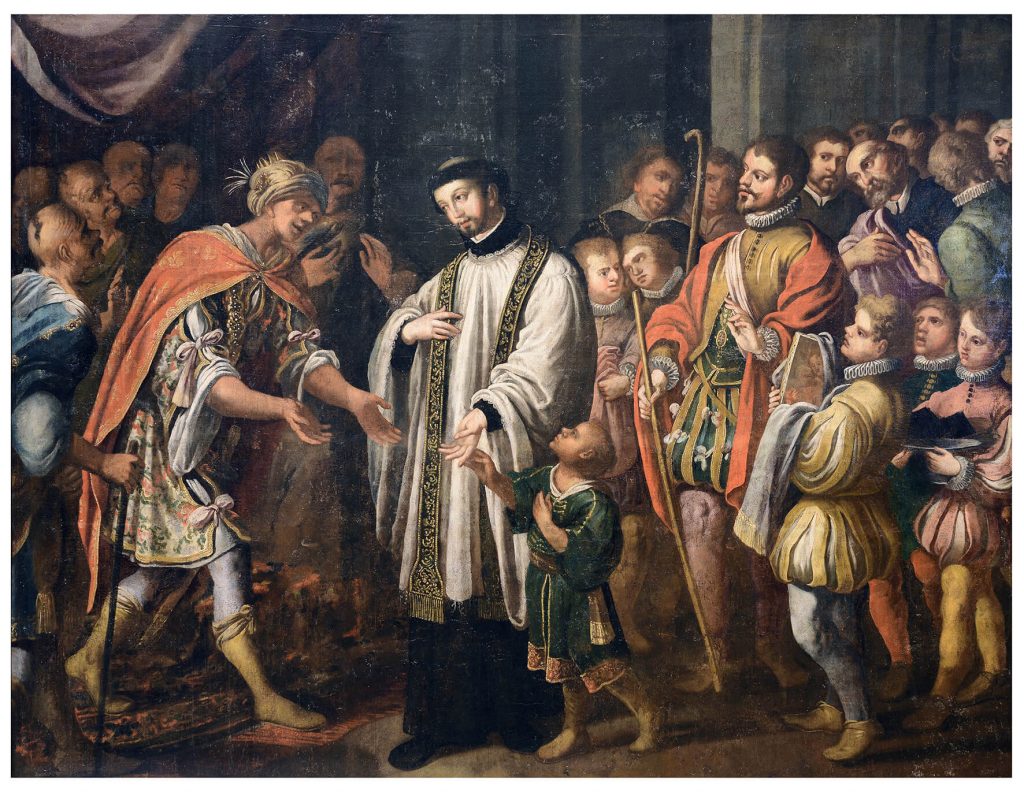Author: Bento Coelho da Silveira (1620-1708)
Date: 17th century (ca. 1670-1675)
Material: oil on canvas
Dimensions: H. 187 x W. 243 cm
Reference: MCMD5709
On display: Carlos Machado Museum
Notes: The collection of the Church of Todos-os-Santos (All Saints), belonging to the Jesuit School of Ponta Delgada, at present hosting the Devotional Art Branch of Carlos Machado Museum, currently holds four paintings attributed to Bento Coelho da Silveira (1620-1708), namely: Saint Francis Xavier Embassy to the Court of the King of Bungo, in Japan, Saint Francis Xavier and the Miracle of Water, Death of Saint Francis Xavier in Shangchuan Island and Nossa Senhora da Assunção (Our Lady of the Assumption). In 1678, Bento Coelho da Silveira, one of the most distinguished Portuguese artists of the 17thcentury, was appointed Royal Painter by King D. Pedro II. In his paintings he predominantly uses oil on canvas, that being an innovative material in the 17th century, due to Italian influence. In 1912, Albert Haupt referred to his works as “Mannerist and spontaneous”.
The painting Saint Francis Xavier Embassy to the Court of the King of Bungo is a representation holding several former interpretations which follows, according to Luís Moura Sobral, an expert in 16th-century Portuguese painting, “(…) the detailed narrative by Lucena, on the life of Francis Xavier and his visit to the court of the King of Bungo, in 1512”.
Taken by the hand of a little boy, Saint Francis is kindly welcomed by a Japanese nobleman, richly clad and wearing a turban on his head. In accordance with the aforementioned researcher, this painting seems to evoke the meeting between Francis Xavier and one of the King’s brothers, in a great room, immediately before the embassy arrives at the sovereign’s antechamber, in Bungo. Having become Francis Xavier’s personal friend, that prince would become King of Yamaguchi and protect the Society of Jesus in that territory. Therefore, Bento Coelho’s painting may be highlighting the Yamaguchi key episode, where the saint introduces himself to the city’s Daimyo, not as a poor pilgrim, but as the Pope’s Ambassador, followed by an entourage of thirty Portuguese, wearing rich garments and carrying several gifts. At the front, Captain D. Eduardo da Gama bears a commanding rod on his right hand and Saint Francis wears a chameleon cassock, a surplice and a green velvet stole, embellished with gold brocade. Very impressed, the Daimyo lended a Buddhist temple to his Catholic mission in the East [António Manuel Silva Oliveira].



